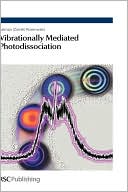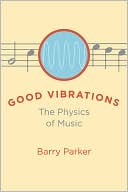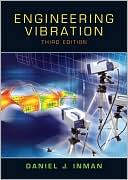Vibrationally Mediated Photodissociation
Search in google:
Vibrationally Mediated Photodissociation (VMP) deals with the influence of vibrational excitation of the ground electronic state of a molecule on its dissociation following excitation of this state to a higher electronic state. Aimed at students and academics, this is the first book devoted to the effect of vibrational pre-excitation on molecular dynamics in the gas phase. In particular, it deals with the influence of this excitation on the dissociation of molecules (i.e. on the branching ratio between the dissociation products and its dependence on the vibrational state being excited). The effect in the gas phase has been extensively studied, both theoretically and experimentally and encompasses diverse areas of chemical physics.This monograph presents the methodology of VMP, using state-of-the-art specific examples. Overviews of earlier works are included as well, to serve as a background for current research. Wherever appropriate, original works are quoted, including the original drawings. The contents include a brief review of theoretical and experimental methods relevant to VMP and specific examples. Also included are a bibliography, author and subject index. From the description of the motivation, the approach, the execution of the experiment and the analysis of the results of the specific examples, the reader will get a comprehensive understanding of the field.The book is aimed at senior undergraduate and graduate students of chemistry and physics. It serves as an introduction to VMP for beginners and as a literature guide to those acquainted with the subject but not necessarily working on VMP.
Abbreviations and Acronyms xiiiUseful Physical Constants and Conversion Factors xivChapter 1 Introduction 11.1 What is VMP and How Does it Work? 11.2 Why VMP? 41.3 Organization of the Monograph 6References 7Chapter 2 Theoretical Aspects 92.1 Photodissociation Dynamics 92.1.1 Potential-Energy Surfaces, the Born-Oppenheimer Approximation and the Franck-Condon Principle 102.1.2 Photodissociation Cross Sections: Computational Approaches 132.1.2.1 Classical Trajectories 142.1.2.2 Time-Independent Approach 142.1.2.3 Time-Dependent Approach 152.1.2.4 Comparison of the Time-Independent and Time-Dependent Approaches 182.1.3 Radiationless Transitions between PESs, the Role of Conical Intersections 182.1.4 Vector Correlations in VMP 202.2 Intramolecular Vibrational Dynamics: Normal and Local Modes and the Role of Intramolecular Vibrational Redistribution 212.2.1 Normal Modes and Local Modes 222.2.2 Intramolecular Vibrational Redistribution 23References 27Chapter 3 Experimental Methods 293.1 Preparation and Detection of Vibrational States 323.1.1 Nonspecific Vibrational Excitation 323.1.2 One-Photon, State-Selected Vibrational Excitation 323.1.3 Two-Photon, State-Selected Vibrational Excitation 333.1.3.1 Overtone-Overtone Double Resonance 333.1.3.2 Preparation by Stimulated Raman Excitation and Detection by Coherent Anti-Stokes Raman Spectroscopy and Photoacoustic Raman Spectroscopy 343.1.3.3 Preparation by Stimulated Emission Pumping 353.1.3.4 Preparation by Stimulated Raman Adiabatic Passage 353.1.4 Monitoring Vibrational Excitation 363.2 Excitation and Detection of Electronic States 363.3Detection and Characterization of Photofragments 373.3.1 Spontaneous Emission and Laser-Induced Fluorescence 373.3.2 Resonantly Enhanced Multiphoton Ionization 373.3.3 Doppler Profiles 383.3.4 High-n Rydberg Time-of-Flight 383.3.5 Photofragment Translational Spectroscopy 393.3.6 Velocity-Map Imaging 40References 40Chapter 4 VMP of Diatomic Molecules and Radicals 434.1 HF 444.2 HCl 444.3 HBr 454.4 HI 464.5 OH, OD, SH and SD Radicals 474.6 O2 48References 48Chapter 5 VMP of Triatomic Molecules Excluding Water 515.1 VMP of O3 515.1.1 Spectral Features of O3 Relevant to VMP 515.1.2 VMP of O3 as a Source of O(1D) 535.1.3 Vector Correlations in the VMP of O3 545.2 VMP of OCS 555.2.1 Spectral Features of OCS Relevant to VMP 555.2.2 VMP of OCS in the Second and Higher Absorption Bands 555.2.3 VMP of OCS in the First Absorption Band 575.2.4 Vector Correlations in the VMP of OCS 595.3 OCSe 605.4 N2O 605.5 CS2 615.6 ICN 635.7 HCN, DCN, HOCl, DOCl and HOBr 63References 64Chapter 6 VMP of Water Isotopologues 686.1 Spectral and Dynamical Features of Water Relevant to VMP 686.2 VMP of H2O and HOD in the Second Absorption Band 706.3 VMP of H2O in the First Absorption Band 716.3.1 Vibrational-State Dependence of H2O Absorption Cross Section 716.3.2 Vibrational Distributions of the OH Photofragments 736.3.3 Rotational, Spin-Orbit and &Lamda;-Doublet State Distributions of the OH Photofragments 756.3.3.1 Rotational Distributions 776.3.3.2 Spin-Orbit and Λ-Doublet Distributions 786.3.4 Vector Correlations in the VMP of H2O 796.3.5 VMP of H2O as a Spectroscopic Tool 796.4 VMP of HOD 816.4.1 VMP of HOD Pre-Excited to Fundamental OH or OD Vibrations 826.4.2 VMP of HOD Pre-Excited to OH Overtones 846.4.3 VMP of HOD Pre-Excited to OD Overtones 886.5 VMP of D2O 90References 90Chapter 7 VMP of Tetratomic Molecules 947.1 VMP of Acetylene Isotopologues 947.1.1 Spectral and Dynamical Features of Acetylene Relevant to VMP 947.1.2 VMP of C2H2 967.1.2.1 Adiabatic VMP of C2H2 97(a) The 4vCH Region 97(b) Comparison of VMP for Different Vibrational Levels in the 5vCH Region 97(c) Rotational Effects in the 5vCH Region 101(d) Comparison of VMP for Different Vibrational Levels in the 4vCH Region 103(e) The 1vCH Region 1047.1.2.2 Nonadiabatic VMP of C2H2 1047.1.3 VMP of C2HD 1077.1.3.1 Adiabatic VMP of C2HD-Evidence for Rotational Dependence of H/D Branching Ratio 1077.1.3.2 Nonadiabatic VMP of C2HD 1107.2 VMP of Ammonia Isotopologues 1107.2.1 Spectral Features of Ammonia Relevant to VMP 1107.2.2 VMP of NH3 1117.2.2.1 VMP of NH3 Prepared at Low Vibrational Energies 1117.2.2.2 VMP of NH3 Prepared at High Vibrational Energies 1167.2.2.3 VMP of NH3 as a Spectroscopic Tool 1177.2.3 VMP of NHD2 and NH2D 1187.3 VMP of HNCO 1207.3.1 Spectral Features of HNCO Relevant to VMP 1207.3.2 A Brief Survey of the VMP of HNCO 1217.3.3 Comparison of VMP of HNCO 3v1 to One-Photon Dissociation of Thermal Molecules 1237.3.4 Application of VMP to HNCO Spectroscopy 1287.4 VMP of Other Tetratomic Molecules 1297.4.1 Hydrogen Peroxide Isotopologues 1317.4.2 Nitrous Acid 1347.4.3 Hydrazoic Acid 135References 136Chapter 8 VMP of Larger than Tetratomic Molecules 1428.1 VMP of Methylamine Isotopologues 1438.1.1 Spectral and Dynamical Features Relevant to VMP of Methylamine 1438.1.2 VMP of CH3NH2 in the Region of the Fundamental CH3 and NH2 Stretches 1458.1.2.1 Evidence for Mode-Dependent Enhancement of Bond Fission and Photoionization of CH3NH2 1468.1.2.2 H-Atom Doppler Profiles: Evidence on the Main Photodissociation Channel 1488.1.3 VMP of CH3NH2 in the Region of the NH2 Overtone Stretches 1498.1.4 VMP of CD3NH2 1508.2 VMP of Haloalkanes 1518.2.1 Hydrochlorofluorocarbons 1518.2.1.1 CHFCl2 152(a) Enhanced Production of Photofragments 152(b) Evidence for Vibrationally Induced Three-Body Photodissociation 1538.2.1.2 CH3CFCl2 156(a) Enhanced Production of Photofragments 156(b) The Effect of Vibrational Pre-Excitation on the Branching Ratios of the Atomic Photofragments in the VMP of CH3CFCl2 and CH3CF2Cl 1568.2.2 Methyl Iodide 1578.2.2.1 Photodissociation in the First Absorption Band: General Background 1578.2.2.2 Photodissociation of Vibrationally Excited CH3I 1598.2.3 Other Haloalkanes 1628.2.3.1 CF3I 1638.2.3.2 CH3Cl and CHD2Cl 1638.2.3.3 CH2Cl2 1648.3 VMP of Phenol 1648.4 VMP of Other Larger than Tetratomic Molecules 1668.4.1 HONO2, (CH3)3COOH, CH3OH, NH2OH, HO2NO2 and CH3OOH 1688.4.1.1 HONO2 ns and fs-ps VMP Studies 1688.4.1.2 (CH3)3 COOH 1698.4.1.3 CH3OH 1698.4.1.4 NH2OH 1708.4.1.5 HO2NO2 1718.4.1.6 CH3OOH 1728.4.2 Acetylene Homologues 1728.4.2.1 Photodissociation Dynamics 173(a) D3CC&Identicalto;CH 173(b) H3CC&Identicalto;CH 174(c) H3CH2CC&Identicalto;CH 1748.4.2.2 Applications to Vibrational Spectroscopy 1768.4.3 Ethene Isotopologues 1778.4.3.1 The Fourth C-H Stretching Overtone Region in H2C=CH2, Trans-HDC=CDH and H2C=CD2 1788.4.3.2 Vibrational Patterns of the First Through Fourth C-H Stretching Overtone Regions in H2C=CH2 1798.4.3.3 The First Stretch Overtone Region in Trans-HDC=CDH: Example of VMP-Based Detailed Analysis of Vibrational Spectroscopy and Dynamics 1808.4.4 UF6 183References 183Concluding Remarks 189Author Index 192Subject Index 201








